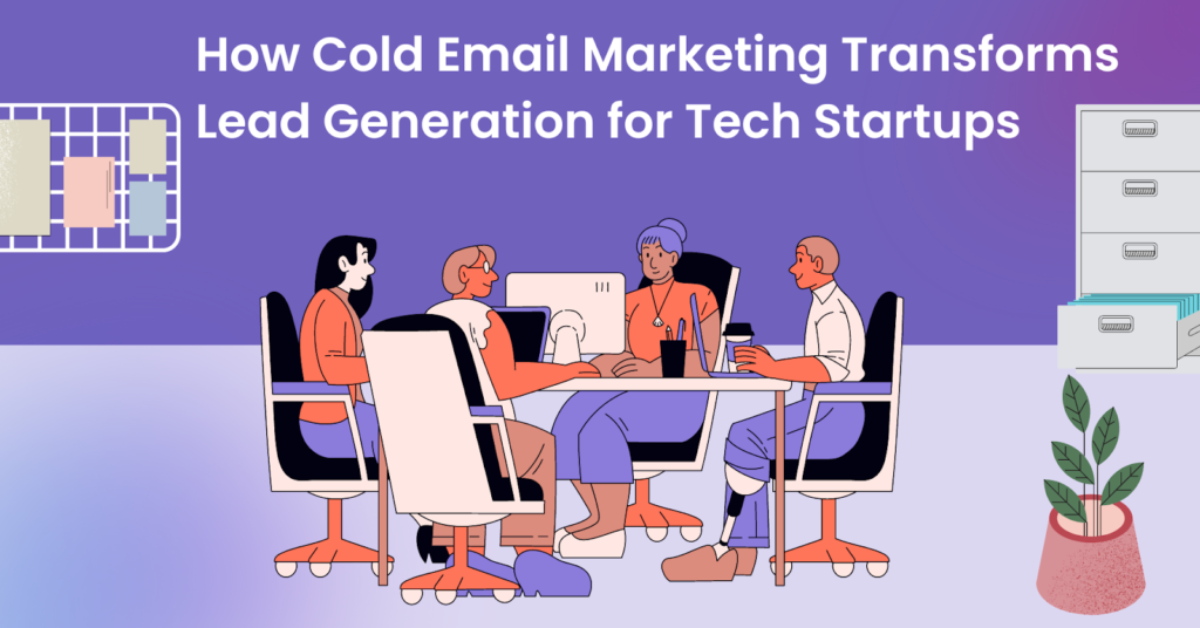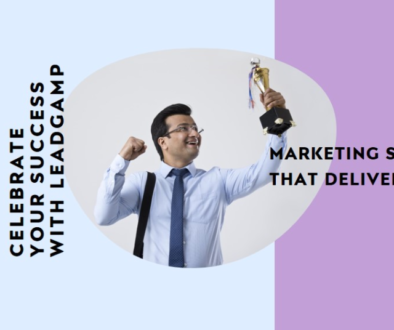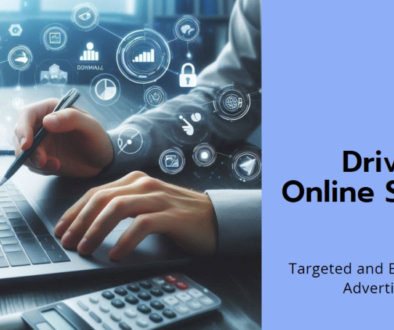How Cold Email Marketing Transforms Lead Generation for Tech Startups
Do you need help finding the right leads for your tech startup?
Building and nurturing relationships with potential clients and partners is crucial for growth in an evolving industry. One method that’s making waves in lead generation is cold email marketing.
When executed strategically, it can unlock new opportunities, drive meaningful connections, and even attract investors. Let’s explore how cold email marketing is transforming the way tech startups generate leads and how you can effectively leverage it for your success.
Targeted Personalization for Higher Engagement
Generic, one-size-fits-all email campaigns are outdated. Most effective cold emails are personalized. Research your leads thoroughly to understand their roles, backgrounds, and company specifics.
Tailor your messages to address their unique challenges and goals, referencing recent news or achievements to show you’ve done your homework. For instance, rather than a generic pitch, say, “I noticed your recent blog about streamlining your sales process. Our AI-driven CRM has helped similar companies cut their sales cycle by 30%.” This personalized approach proves you understand their needs and offer a relevant solution.
Elevate your cold email campaigns with advanced features that enhance personalization, deliverability, and analytics. Embrace cutting-edge cold email marketing strategies to create impactful campaigns with dynamic content, strategically schedule emails, and test different approaches.
Manage multiple sender accounts to broaden your reach and optimize inbox delivery.
Ensure your emails land in the inbox, not spam folders, with integrated deliverability solutions like DNS setup, DMARC monitoring, and blacklist tracking. Get tips for improving content and detailed insights to refine your campaigns.
Transform your cold email outreach today with these strategies and tools, and see a significant boost in your engagement and response rates.

Strategic Follow-up Sequences
Did you know that 80% of all sales require at least five follow-ups before closure, but most people give up after just one or two attempts? That’s why a well-planned follow-up sequence is important.
Timing is everything: follow-ups should be no less than every 48 to 72 hours. Each follow-up should bring value to the table, whether it’s sharing a relevant case study, providing industry insights, or offering a quick demo. That means follow-through, not follow-over, striking the perfect balance between being proactive and respectful of your prospect’s time.
Sending follow-up emails can increase response rates 21% because it is not about being a pain in the rear, but rather just making sure you stay top of mind with meaningful, helpful touchpoints.
It might look something like this: an introductory email that gave your value proposition, a follow-up 48 hours later with a case study relevant to your target, a suggested 15-minute demo 72 hours later, sharing of industry trends or insights relating to their business a week later, and ending it with a check-in, clear call to action two weeks later.
Leveraging Automation Without Losing the Human Touch
Automation has completely changed the dimensions of cold email campaigns, it can scale business outreach without sacrificing personalization. Personalized details such as names, company references, or pain points in automated cold emails can increase open rates by as much as 50%.
The road to automation: use dynamic fields to make key aspects personalized, set up triggered follow-ups based on actions taken by recipients, and A/B test elements like subject lines for improvements. While manual cold emailing is a pretty time-consuming process and riddled with possible mistakes, automation ensures consistent delivery, wider outreach, and simpler performance tracking.
While automation enhances efficiency, it’s essential not to lose the personal touch. Automation should do the mundane tasks to give you more time to focus on the little touches which make a difference in engagement and relationship-building.
Cold Emailing to Build Investor Relationships
For tech startups, building a relationship with investors is just as important as getting customers, and this is the point where cold emailing can do wonders. After all, around 70% of investors prefer email contact, making it a critical tool for startup fundraising.
First and foremost, writing an efficient cold email will involve some prior research on the investor’s portfolio and investment focus. The outreach should highlight in a few lines some key metrics and milestones your startup has achieved to show its traction and explain with crystal clarity how this business fits into the investor’s strategy.
That is because investors are always short of time. A well-penned cold email displaying value and alignment can actually get the ball rolling for serious investment opportunities that very first impression.
Measuring and Optimizing Email Performance
With cold email marketing, everything can be measured down to the last detail to continually refine and improve your strategy. For example, analyzing open rates reveals if your subject lines are engaging, click-through rates (CTR) indicate whether your content prompts action, reply rates show how well you’re generating interest, and conversion rates track how many leads turn into opportunities. Results can be further optimized through A/B testing to fine-tune key elements like subject lines and calls to action.
However, personalization won’t be effective if your emails end up in spam folders. To enhance deliverability, use gradual email domain warming, implement authentication protocols like SPF, DKIM, and DMARC, and maintain a clean email list by removing bounces and unsubscribes. Avoid spam trigger words in your content. Consistently measuring and optimizing these factors, along with understanding global trends in email marketing device optimization, will maximize the effectiveness of your cold emails.
The Role of Cold Emails in Scaling Lead Generation
Cold email marketing helps tech startups scale their lead-generation efforts. It allows one to go past their immediate network and into a network of potential clients or partners in certain niches. Cold emails also complement inbound strategies by filling in the gaps where perhaps inbound marketing may fall short,it provides a method for testing new markets and interest in emerging products or services. This could help them create an omnichannel lead generation strategy when integrated with other marketing tactics.
One great example is TechNova, a B2B SaaS startup that uses targeted cold emails for enterprise market entry. It has sent 10,000 highly researched emails, averaged 22% open rates with a 5% reply rate-that is, 50 qualified leads with the addition of 10 new enterprise clients in just six months. Success was driven by personalized content and strategic follow-ups, coupled with continuous optimization based on performance metrics.
Conclusion
Cold email marketing, when executed with strategy and finesse, can truly transform lead generation for tech startups. By focusing on personalization, leveraging automation wisely, and continuously measuring and optimizing performance, you can turn cold outreach into a powerful tool for growth.
Remember, the goal isn’t just to get replies—it’s to start meaningful conversations that lead to valuable partnerships, whether with potential clients or investors.
FAQs
How can I prevent my cold emails from ending up in the spam folder?
To avoid having your cold emails classified as spam, use a reputable email service provider that ensures proper deliverability. Steer clear of spam trigger words in your subject lines and content, as these can raise red flags for spam filters. Authenticate your domain with SPF, DKIM, and DMARC to prove your legitimacy. Gradually increase your sending volume to warm up your domain and establish a positive sending reputation. Additionally, regularly clean your email list to remove invalid addresses, which helps maintain a good sender reputation and improves deliverability.
How many follow-up emails should I send without being intrusive?
It’s generally advisable to send 2-3 follow-up emails to avoid being intrusive. Space these follow-ups over 1-2 weeks to give recipients time to respond. Ensure that each follow-up email provides additional value rather than simply serving as a reminder, which helps maintain engagement and demonstrates your commitment to offering useful information or solutions.
Is it legal to send cold emails?
Cold emailing is legal in most countries for B2B purposes, but there are specific regulations you must follow. It’s crucial to familiarize yourself with applicable laws, such as CAN-SPAM in the US, CASL in Canada, and GDPR in the EU. Always include an unsubscribe option in your emails and promptly honor any opt-out requests to comply with these regulations and maintain a respectful approach to email communication.



